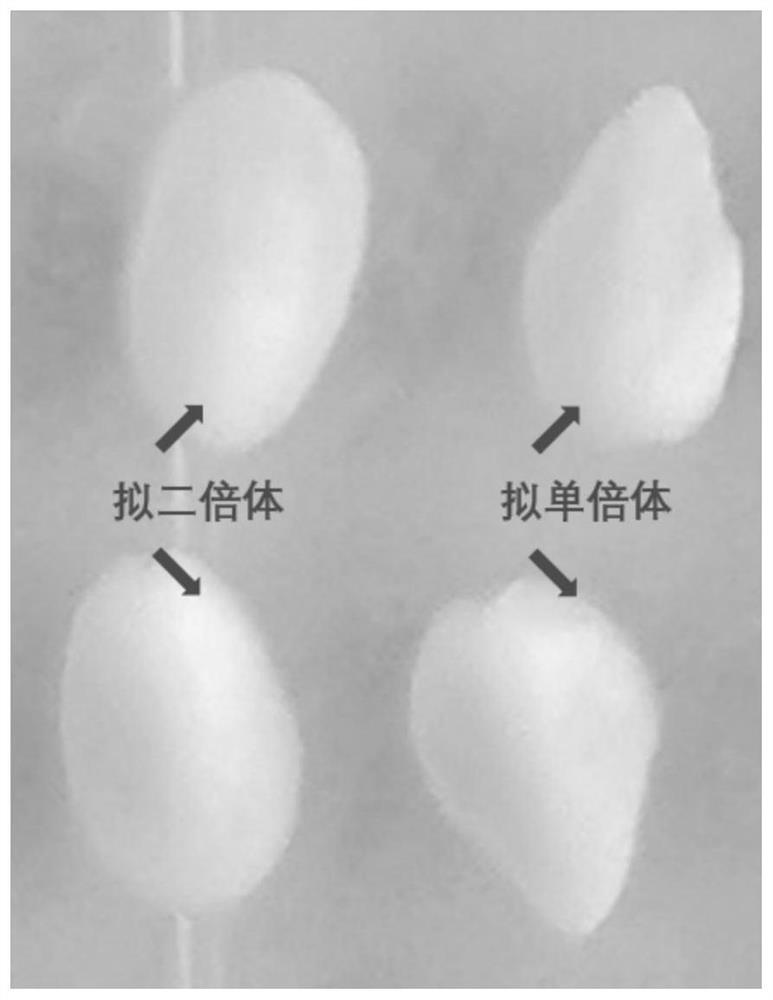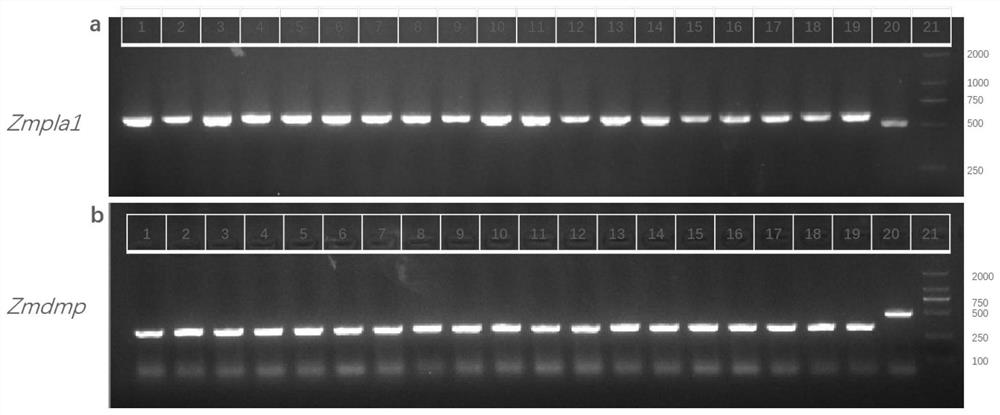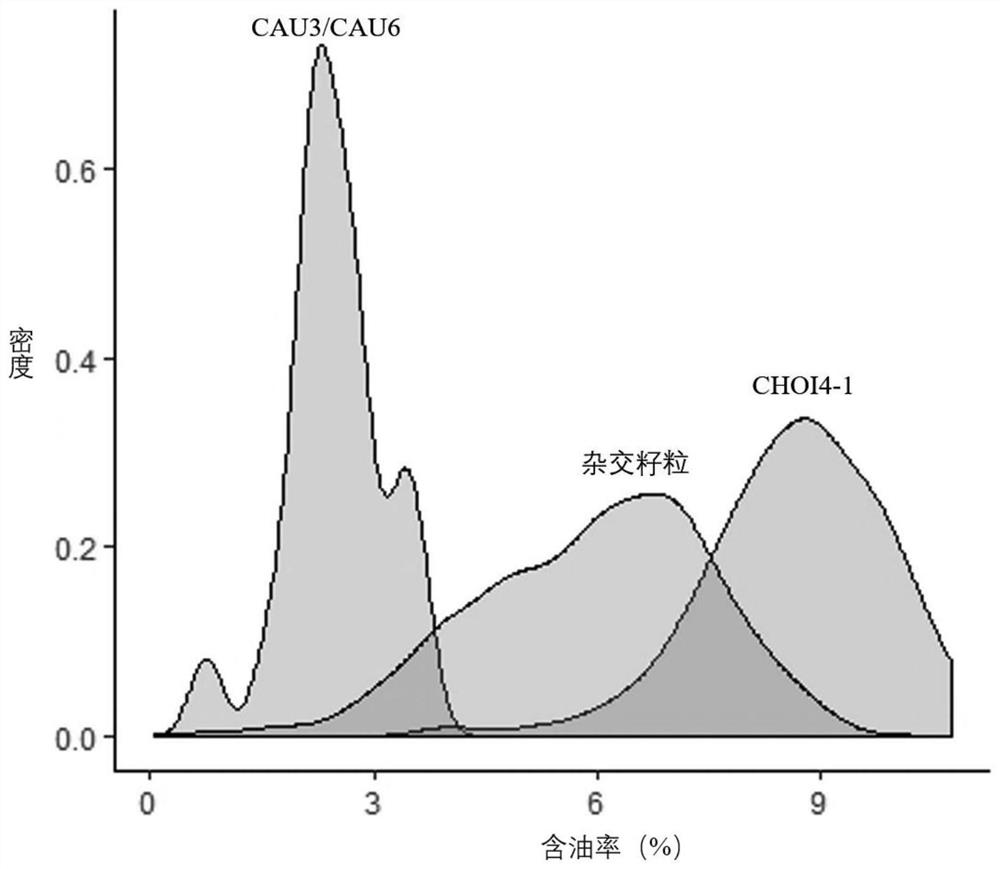A kind of method and its application of fast breeding maize haploid induction line
A haploid induction system and haploid technology, applied in the biological field, can solve the problems of long field test work, limited breeding cycle, and inability to identify haploids, so as to improve the efficiency of haploid breeding, promote development, The effect of reducing test workload
- Summary
- Abstract
- Description
- Claims
- Application Information
AI Technical Summary
Problems solved by technology
Method used
Image
Examples
Embodiment 1
[0047] Example 1 Breeding maize haploid induction line
[0048] 1. Construction of the basic material of the inducible line
[0049] In the winter of 2019, in Hainan, the maize haploid inducible lines CAU3 (induction rate of about 10%) and CAU6 (induction rate of about 12%) were planted, with CAU3 as the female parent and CAU6 as the male parent to assemble the hybrid combination CAU3 / CAU6, Harvest F 1 Seeds (F of CAU3 / CAU6 1 generation). the F 1 Seeds are the basic material.
[0050] 2. Hybrid induction to obtain candidate material groups containing haploids
[0051] Planting CAU3 / CAU6 F in Beijing in the spring of 2020 1 The generation was used as the female parent (induced material), and the inductive line CAU5 (induction rate was about 10%) was used as the male parent for induction. 15 days after pollination, the hybrid embryos were stripped and placed on MS solid medium for culture. The ploidy candidate material group (haploid immature embryos to be identified), a...
Embodiment 2
[0096] Example 2 Identification of inducible haploids based on oil content
[0097] 1. Induction of inducible haploids and determination of oil content
[0098] In the spring of 2018 in Beijing, the maize haploid inducible lines CAU3 (induction rate of about 10%) and CAU6 (induction rate of about 12%) were planted, with CAU3 as the female parent and CAU6 as the male parent to create a hybrid combination CAU3 / CAU6, Harvest F 1 Seeds have an oil content of about 3%.
[0099] In the winter of 2019, Hainan, planting CAU3 / CAU6 F 1 As the female parent (induced material), the high-oil inducible line CHOI4-1 (induction rate of about 12% and oil content of about 8%) was used as the male parent for hybridization. A sorter (model: nuclear magnetic resonance oil moisture content analyzer PQ001-20-025V, Suzhou Niumai Analytical Instrument Co., Ltd.) was used to measure the oil content of the grains. For the specific oil content distribution, see image 3 and Table 5.
[0100] Table 5...
PUM
 Login to View More
Login to View More Abstract
Description
Claims
Application Information
 Login to View More
Login to View More - R&D
- Intellectual Property
- Life Sciences
- Materials
- Tech Scout
- Unparalleled Data Quality
- Higher Quality Content
- 60% Fewer Hallucinations
Browse by: Latest US Patents, China's latest patents, Technical Efficacy Thesaurus, Application Domain, Technology Topic, Popular Technical Reports.
© 2025 PatSnap. All rights reserved.Legal|Privacy policy|Modern Slavery Act Transparency Statement|Sitemap|About US| Contact US: help@patsnap.com



